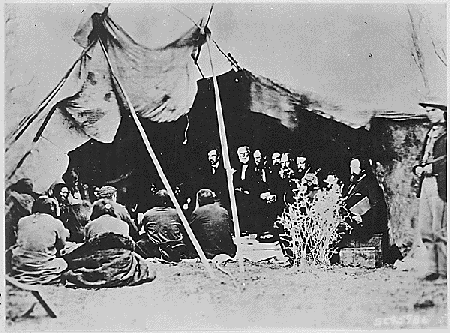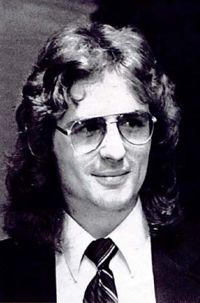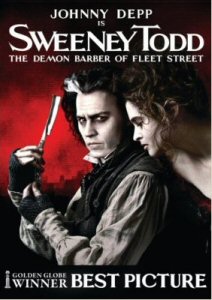[I don’t mean the RtB blog, which I hope you read every day anyway.]
 Every American needs to read the book I read last summer, after I’d forgotten about it for almost 30 years. Click the picture to get a better look so you can identify it at the library or the bookstore. You could also borrow my tattered copy.
Every American needs to read the book I read last summer, after I’d forgotten about it for almost 30 years. Click the picture to get a better look so you can identify it at the library or the bookstore. You could also borrow my tattered copy.
Why do I say read this ? Because if you think that America has always had her arms, lands and ports open to the tired, poor and huddled masses yearning to breathe free — you need only look as far as the United States government’s shameful behavior from 1840-1890 to be slapped back to reality.
Bury My Heart at Wounded Knee is based on first-person and government sources, interviews and actual letters written by Native Americans and US military and government personnel. Author Dee Brown unearthed documents that were hidden away – and likely forgotten – for a hundred years. What resulted in 1970 was an account of the real experiences of “Indians” in America (by the way, they were the true Americans – not the white people who came from Europe). It is a profoundly heartbreaking account of lies, intolerance, cruelty, ignorance and ultimate betrayal.
Here is an exercise in empathy.
Imagine being offered a beautiful gift by someone you trust; someone who you believe has your best interests at heart and who cares about the welfare of your family. As you reach out to accept this lovely gift, your friend slaps your face as hard as he can.
A little while goes by, and your friend returns, bearing another gift. You are a bit wary…you still remember the sting and humiliation you suffered last time. But your friend is sincere; he wants you to know that he is being truthful and all is well. He looks at you with eyes full of respect and friendship. Your heart melts and you are won over. With a smile on your face, your faith restored, you gratefully reach for the gift, only to be slapped across your face once again — except harder this time.
 And that is what happened to Native Americans at the hands of their “friends,” the United States government. Over and over and over. Gifts of treaties, treaties and more treaties — as if the land was the white man’s to give in the first place. Treaties and promises, all broken. All lies. All in the name of greed, but covertly painted the pretty colors of Christianity and Manifest Destiny.
And that is what happened to Native Americans at the hands of their “friends,” the United States government. Over and over and over. Gifts of treaties, treaties and more treaties — as if the land was the white man’s to give in the first place. Treaties and promises, all broken. All lies. All in the name of greed, but covertly painted the pretty colors of Christianity and Manifest Destiny.
Feh.
You might wonder why the Indians kept believing the promises of the “Great Father” (whatever American president was sitting at the time). Were they just gullible? Stupid? Both?
Not by a long shot. They simply believed that people were inherently good and respectful of those who had lived on the land for generations beyond memory. Unfortunately, they sorely misjudged the American military.
Navajo, Sioux, Cheyenne, Ute, Peyote, Apache. All viewed as “savages” because they dressed differently, worshiped differently, and lived by different laws. Armed with a pathetic mission based on selfish lust for more and more land, the US government set about driving these people from their ancestral homes, and eventually onto reservations, where they lived a humiliating and suffocating existence. And the story only worsens from there.
Bury My Heart is not beach reading, for sure. It takes a considerable amount of fortitude to read chapter after chapter of accounts of inhumane (and indeed, inhuman) treatment of people whose repeated arguments that “we can all live together in peace, and share the land” went unheeded, and were repaid with such cruelty that some tribes were obliterated completely from existence.
The Native Americans had finally had enough, and started to fight back — and sometimes, to fight first. Humans can only be pushed so far.
Read this incredible book to see just how far they were pushed. It will amaze you, anger you, and break your heart.
Side note: I want to rent the movie that HBO made of the book. It won the Emmy for “Best Movie Made for Television” in 2007. If you’ve seen it, let me know what you thought of it.
~~~~~~~~~~
Photo credit: Treaty signing by William T. Sherman and the Sioux at Fort Laramie, Wyoming.
Photographed by Alexander Gardner, 1868. The National Archives: www.archives.gov

 Most disappointing to me was to find that Paul was a bigtime control freak; a shrewd, shameless self-promoter with visions of personal grandeur and an ego the size of Paraguay. Near the end of the Beatles’ time together, the other three decided that Paul was no longer going to call the shots for the band, and they quietly and privately walked out on him. Then, appearing ever the boss and refusing to be outdone, Paul declared via news conference that he was leaving the Beatles, and that the band was no more.
Most disappointing to me was to find that Paul was a bigtime control freak; a shrewd, shameless self-promoter with visions of personal grandeur and an ego the size of Paraguay. Near the end of the Beatles’ time together, the other three decided that Paul was no longer going to call the shots for the band, and they quietly and privately walked out on him. Then, appearing ever the boss and refusing to be outdone, Paul declared via news conference that he was leaving the Beatles, and that the band was no more. And in the end, the love you take is equal to the love you make.
And in the end, the love you take is equal to the love you make. David Koresh was a wackjob, no doubt about it. He started the Branch Davidian sect as a breakaway from the Seventh Day Adventists, and moved himself and all his followers into a compound near Waco, Texas. He called it “Mount Carmel.” He talked a lot about the coming Apocalypse.
David Koresh was a wackjob, no doubt about it. He started the Branch Davidian sect as a breakaway from the Seventh Day Adventists, and moved himself and all his followers into a compound near Waco, Texas. He called it “Mount Carmel.” He talked a lot about the coming Apocalypse. I watched Sweeney Todd for the 4th time last night. Awesome.
I watched Sweeney Todd for the 4th time last night. Awesome. The role of the evil Judge Turpin is played by Alan Rickman – best known as Professor Snape in the Harry Potter movies – and he does quite nicely. One doesn’t hear true bass in musicals very often.
The role of the evil Judge Turpin is played by Alan Rickman – best known as Professor Snape in the Harry Potter movies – and he does quite nicely. One doesn’t hear true bass in musicals very often. Outside of that one drawback, the film is deliciously dark and disturbing. Ok, I admit I always close my eyes at the throat-slashing, but I can use my imagination.
Outside of that one drawback, the film is deliciously dark and disturbing. Ok, I admit I always close my eyes at the throat-slashing, but I can use my imagination.